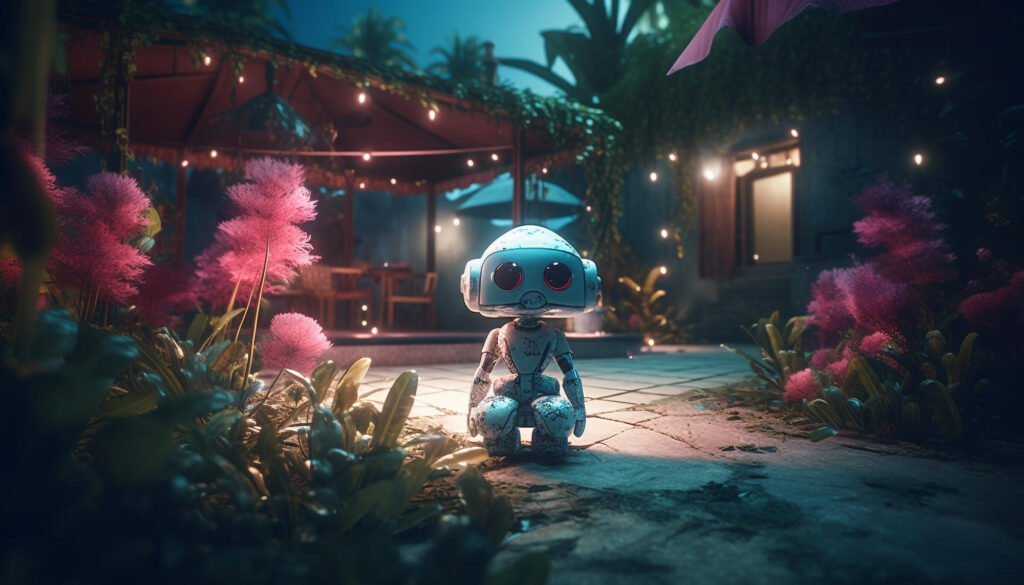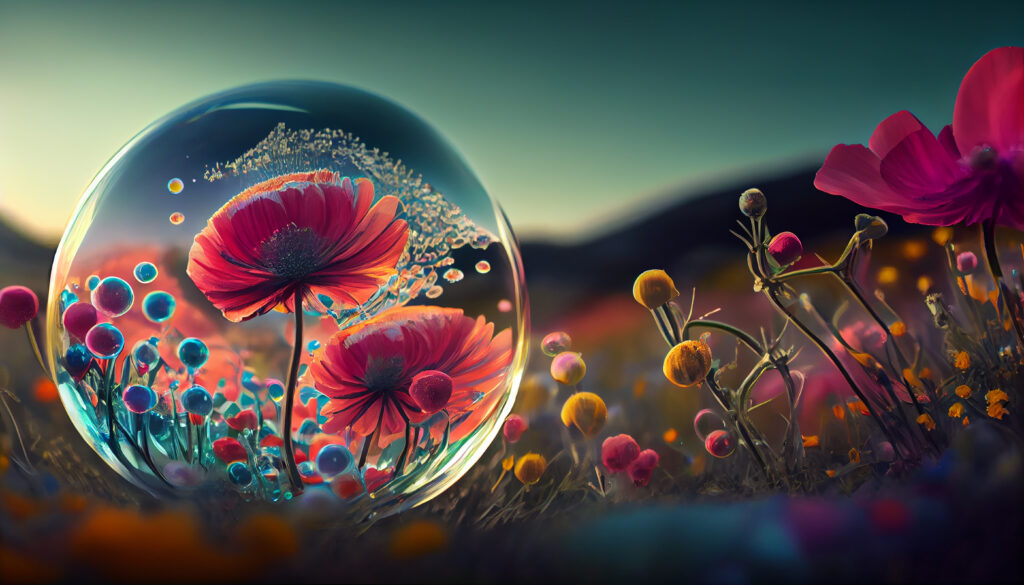Table of Contents

What is AI Art: A FascinatingExploration of Creativity and Technology
In recent years, the world has witnessed a groundbreaking revolution in the field of art, one that blurs the boundaries between human creativity and advanced technology. This phenomenon is known as AI art, where Artificial Intelligence algorithms are employed to create stunning and thought-provoking artworks. In this article, we will delve into the fascinating realm of AI art, exploring its origins, the technology behind it, its impact on the art world, and the implications it has for the future of creativity.
1. The Emergence of AI Art : what is ai art ?
AI art is an innovative blend of human ingenuity and machine intelligence. It all started with the development of Generative Adversarial Networks (GANs), a subset of AI that pits two neural networks against each other – a generator and a discriminator. The generator is tasked with creating artworks, while the discriminator evaluates them for authenticity. As this process continues, the AI system learns and improves, producing art that is remarkably close to human-made creations.
2. The Technology Behind AI Art
The technology behind AI art is complex and powerful. The neural networks in GANs are fed with vast amounts of data, including paintings, photographs, and various forms of visual art. Through an iterative process, the AI system learns to recognize patterns, styles, and techniques employed by human artists, enabling it to generate original artwork.
3. AI Art and Creativity
One of the most intriguing debates surrounding AI art is its impact on human creativity. Critics argue that AI-generated art lacks the emotional depth and soulful expression that human artists infuse into their work. However, proponents argue that AI art should be seen as a new form of creativity, coexisting with traditional art rather than replacing it. The AI algorithms can produce art that challenges conventions and pushes the boundaries of imagination.
4. The Rise of AI Artists
AI-generated art has not only captivated art enthusiasts but has also gained recognition in the mainstream art world. Several AI artists have emerged, garnering significant attention for their algorithmically created masterpieces. Notable examples include “Portrait of Edmond de Belamy,” an AI-generated artwork that was auctioned at a major art house, fetching an unexpected price.
5. AI Art in Various Forms
AI art is not confined to traditional visual art. The technology has expanded into other creative realms, including music, literature, and even film. AI algorithms can compose music, write stories, and generate scripts for short films, challenging the notion of what it means to be a creative artist.
6. AI Art and Copyright
As AI algorithms produce increasingly sophisticated art, questions arise concerning copyright and intellectual property. Who owns the rights to AI-generated artworks? Is it the AI artist, the developer of the algorithm, or the dataset used to train the AI? Legal and ethical frameworks are being developed to address these complex issues.
7. AI Art and Accessibility
AI art has the potential to democratize the art world by making it more accessible to a broader audience. Traditional art creation often requires expensive materials and years of training, which can be prohibitive for aspiring artists. AI-generated art, on the other hand, allows novices to experiment with creativity and express themselves through digital mediums.
8. The Future of AI Art
As AI technology continues to evolve, the future of AI art holds tremendous promise. AI algorithms are expected to become more sophisticated, producing art that is indistinguishable from human creations. This will challenge our perceptions of artistry and creativity, leading to philosophical debates on what it means to be an artist.
9. The Human-AI Collaboration
Rather than a competition between human artists and AI algorithms, the future might see a harmonious collaboration. Human artists can leverage AI as a powerful tool to augment their creative process, leading to novel and groundbreaking artworks that combine the best of human emotion and machine intelligence.
10. Conclusion
AI art represents a captivating fusion of human imagination and technological prowess. While it sparks debates about the nature of creativity and the future of art, it also opens up exciting possibilities for artists and enthusiasts alike. As AI technology progresses, we can expect to witness the emergence of even more astonishing and thought-provoking AI-generated masterpieces. Embracing AI art as an innovative form of expression will lead us into an era where human and machine creativity dance together in an intricate and mesmerizing duet.
11. Ethical Considerations in AI Art
As AI art gains prominence, ethical concerns have arisen, particularly regarding the potential misuse of AI algorithms. One critical issue is the potential for AI-generated art to be used for malicious purposes, such as creating deepfake artworks or generating misleading propaganda. It is essential for developers and users of AI art to be conscious of these ethical implications and take measures to ensure responsible use.
Moreover, AI algorithms are heavily dependent on the data they are trained on. If the training data contains biased or discriminatory content, the AI-generated art could perpetuate harmful stereotypes or biased representations. Ensuring diverse and inclusive datasets becomes imperative to mitigate such risks.
12. The Impact on Artistic Expression
AI art’s rise has sparked intriguing discussions about how it influences human artists’ creative process and expression. Some artists view AI as a source of inspiration, using it to explore new artistic styles or break creative blocks. On the other hand, some may fear that AI-generated art could saturate the market, leading to a loss of value for traditional human-made art.
Additionally, AI-generated art may raise questions about authorship and authenticity. The distinction between human-made and AI-generated art could become blurred, challenging the traditional notion of an artist’s signature style.
13. AI Art and Cultural Preservation
AI art holds immense potential in preserving and restoring cultural heritage. AI algorithms can analyze and recreate ancient artworks, artifacts, and historical sites, allowing us to experience and learn from our rich cultural history. This technology can aid in the conservation and documentation of cultural treasures that might otherwise be lost to time.
14. AI Art and Personalization
The versatility of AI art extends beyond its creative capabilities. It can be harnessed for personalized art experiences, where individuals can have art pieces generated specifically for them based on their preferences and interests. This form of art personalization could revolutionize the way people interact with and appreciate art.
15. The Ethereal and Surreal Aspect of AI Art
AI-generated art often possesses an otherworldly and surreal quality that captivates audiences. The ability of AI algorithms to blend and manipulate different artistic styles gives birth to art that challenges our perceptions and stimulates our imagination. This ethereal aspect of AI art has the potential to create entirely new art movements.
16. The Role of Curators and Critics
As AI art continues to gain traction, the role of art curators and critics becomes more critical than ever. Curators will need to navigate the complexities of AI-generated art to curate exhibitions that strike a balance between traditional and AI-based artworks. Critics will be tasked with developing new frameworks for evaluating AI art, considering the involvement of machine intelligence in the creative process.
17. AI Art and Emotional Connection
One of the key aspects of art is its ability to evoke emotions and forge a connection with its audience. AI-generated art has shown promise in this regard, with some pieces eliciting profound emotional responses from viewers. The capacity of AI algorithms to understand human emotions and adapt their creations accordingly could lead to deeply immersive and emotionally resonant art experiences.
18. The Educational Potential of AI Art
AI art presents exciting opportunities for education and learning. Its ability to deconstruct complex artistic techniques and styles can aid aspiring artists in honing their skills. Additionally, AI-generated art can serve as a valuable tool for educators, illustrating historical art movements and facilitating discussions on the intersection of technology and creativity.
19. The Collaboration Between Artists and AI
Collaborations between human artists and AI algorithms have already yielded remarkable results. Some artists actively embrace AI as a co-creator, using its computational power to enhance their vision and explore new artistic territories. These collaborations showcase the harmonious relationship that can be forged between human ingenuity and machine intelligence.
20. Embracing the AI Art Revolution
The advent of AI art signifies a transformative chapter in the world of creativity and technology. Embracing this revolution entails acknowledging the potential of AI to inspire, innovate, and challenge our preconceptions about art. It is a journey into uncharted territory, where humans and machines dance in an evolving symphony of imagination and innovation.
what is ai artwhat is ai artwhat is ai artwhat is ai artwhat is ai artwhat is ai artwhat is ai artwhat is ai artwhat is ai artwhat is ai artwhat is ai artwhat is ai artwhat is ai artwhat is ai art

